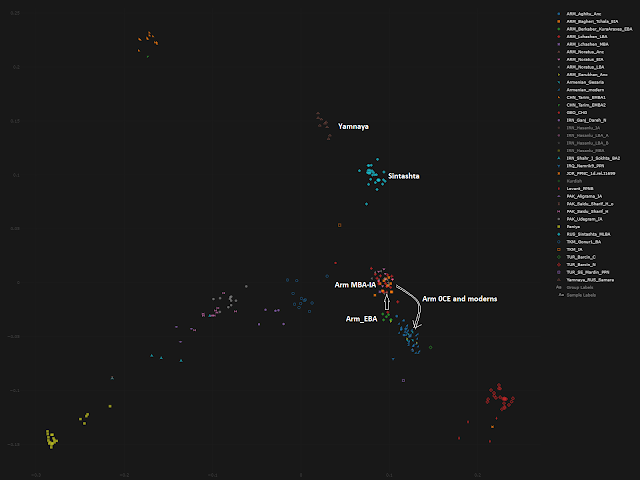The Armenian Data from the new papers
1. Some EHG ancestry from north of caucasus is seen at Areni Cave, 4200BCE.
2. EHG dilutes by the time of Kura Araxes 3600-2000BCE, Arm_EBA (green below).
3. Arm_MBA/LBA/IA cluster clearly shifts towards steppe, with lots of R1b & I2 Y hg. According to Lazaridis et al, this explains the Armenian language branch. For now I will accept this conclusion as it makes sense, and explains the different language of NW Iran.
4. Post IA, intense mixing with more southwestern populations (but not NW Iran) so much so that all steppe autosomal ancestry gets diluted.
 |
| PCA - Ancient & Modern Armenia |




